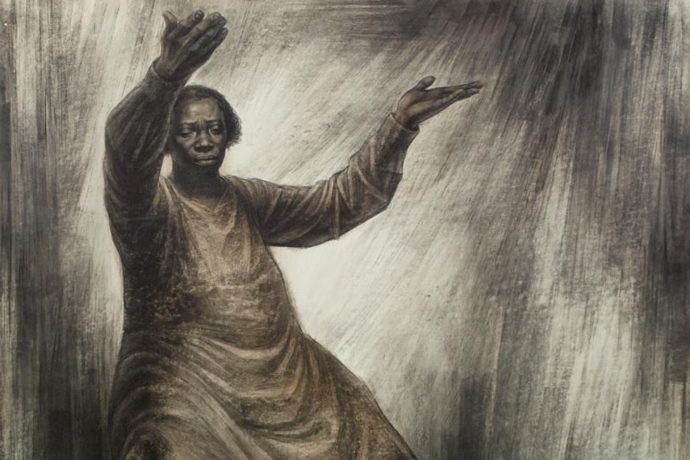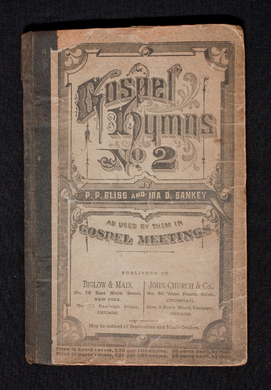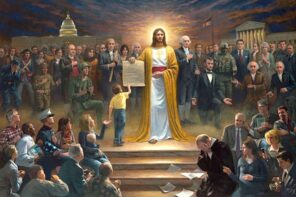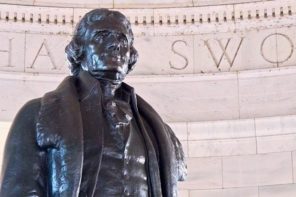This Saturday, priceless religious relics from black history like Nat Turner’s Bible, Harriet Tubman’s hymnal and antique pews from AME churches across the country will be on view at the grand opening of the National Museum of African American History and Culture.
Housed within the new museum will be the Center for the Study of African American Religion, a $10 million project that aims to further research on the inextricable role spirituality has played in black America’s past and present.
I took a moment to speak with its recently appointed chief curator [and current advisor to RD’s “Remapping U.S. Christianities” initiative], the Rev. Yolanda Pierce, about the goals of the center and the narrative of religion, race and resistance it hopes to tell.
Anita Little: Can you explain a little about the purpose of the center and the significance of the new museum having a Center for the Study of African American Religion, especially funded on the large scale that it is?
Yolanda Pierce: I just recently joined, the current staff has been working on this for 10 years. So a lot of the credit belongs to the team that’s already here. One thing they’ve done very well is incorporate religion throughout the museum, all the way from slavery to Jim Crow to segregation to Black Power. Anywhere a visitor to the museum looks, they’ll see the richness of faith and religion in black history. There are particular items, like Nat Turner’s Bible for instance, that have a deeply religious significance, but there are others just woven throughout the fabric of the museum. The task of my team will be to continue to curate those items, collect those items and design exhibits for them.
We’re answering the larger question of how do faith and spirituality constructs infuse the African American experience? (This is broadly construed, it’s not just Christian.) We do that by studying oral history, researching genealogy, and creating programs for churches, mosques and faith-based organizations.
A lot of prestigious black institutions donated religious artifacts to the museum, which of the objects moved you the most?
That’s a hard question because there are so many! Standing within two feet of Nat Turner’s Bible is very powerful and moving because you start thinking about the connection with religion and resistance. Nat Turner’s story has always been the story of how religion has been used in resistance to oppression, and to me, that’s incredible.
Another object that I deeply love is that in the 1968 exhibit, there’s a series of first edition books. You have The Fire Next Time by James Baldwin, you have James Cone‘s work and Albert Cleage‘s story. You see how people saw 1968 as this real shift in black religion. It’s a reminder that even in the Black Power movement, religious faith was deeply embedded.
Okay, I really didn’t want to choose but my absolute favorite piece is in fine arts, in the visual arts gallery. It’s a beautiful illustration by the very famous and well-collected African American artist Charles White called “Move On Up a Little Higher” [see above].

Taken by Rev. Henry Clay Anderson at a church congregation in Greenville, Mississippi, Collection of the Smithsonian
It appears that there has never been a research center on this scale devoted to black religious life. Why do you think it’s happening now?
I believe it’s the commitment of the our director, Dr. Lonnie Bunch, and the commitment of the museum to tell the fullness of the story. What I mean by the “fullness” of the story is to show all the different aspects to our history that exist.
At the museum, we have a shofar horn as a sort of reminder that there have always been African Americans in the Jewish community. We also have a number of artifacts from the Nation of Islam as well as other Muslim communities. So the museum reminds us there were African Muslims who were enslaved, making the Islamic experience part of the founding of America.
Even though black history is dominated by the Christian voice, it is not the only voice that is present. We strive to tell the story from Islam to Judaism to Christianity to a number of other smaller movements.
What does the center’s existence say about the continued relevance of black religion, Christianity especially, in a cultural milieu that’s becoming more secular and averse to institutions?
It reminds us of what Pew and other studies have showed us, which is that within the African American context, there isn’t the downward shift that we’ve seen in traditional, mainline denominations. Religious faith is very alive and well, but it doesn’t necessarily look like how it did before.
If we only think of the religious as those who attend a weekly service of their choice, then we’re missing part of the picture. We’re missing people who find their faith in activism (movements like Black Lives Matter), or in educational institutions. In the center, I hope we can tell not only how deeply embedded religion is within the black context, but how diverse it has always been. It’s not just about where you go on Sunday morning, it’s about the communities you chose to live in, how you educate your children and how you protest.
Leaping off of that question, in what way is black history and black present inseparable from black religion?
A major question is: how do you separate out this story? For example, if we’re looking at 1968, and we’re studying the Black Panthers or Black Power, we tend to assume that story is different from 1964 with the story of Rev. Martin Luther King. But we forget the religious influence that happened in both of those. For me, all of this is really meshed together in how we talk about resistance.
On these most recent killings, we’re on Twitter talking about police brutality and violence, but we’re also talking about religious faith and theology—even if we don’t think that’s what we’re talking about.
How do we tell the story of the Good Samaritan when the person on the side of the road is killed? There are a lot of people in our current political climate and our current discussions about race who are really using theological language to help us think through some of these issues.
How does the center and the museum as a whole reconcile the role Christianity has played in black private and public life with the role Christianity has also played in justifying slavery and black oppression?
Well, we don’t really know yet because the place is brand new! My initial answer is that Christianity has been the dominant voice—not the only voice, but the dominant one. Even in the way we talk about the founding of the nation in general, we’re often tying it to Christian texts and Christian theology. We have to recognize the ways Christianity provided a beautiful language for resistance against slavery, but also the ways a pro-slavery theology reinforced oppression.
We also have to acknowledge how there have always been agnostics, atheists and humanists—that’s part of the African American tradition as well.
However, Christianity is the tool many black leaders have chosen, and for a long time many African American political leaders were also religious. They were ordained ministers, they were church women. We can’t tell the story of black women in freedom movements in the 19th century unless we’re telling the story of black church women. Christianity is constantly going to be intertwined in how we talk about our history and our heritage, and we have to let that story unfold while recognizing the multiplicity of other voices in the conversation as well.
A Los Angeles Times piece by Jaweed Kaleem accused the museum of giving Black Lives Matter but a small cameo in its exhibit. Were you satisfied with the museum’s representation of BLM or did you find it cursory?
The museum wants to do justice to everything and everybody, but only has so much space. I know people will look at the museum and think we have a lot of space, but there’s so much history. We’re talking about well over 300 years of history, and even earlier than that because the museum’s journey starts in Africa. The very first stop of the tour isn’t even U.S. history!
Also I don’t want people to forget that we will have special exhibits put together and collections rotating in and out. We’re trying to tell several centuries worth of history. That’s not an easy thing to do.
That morning on opening day, President Obama is scheduled to give a speech and ring a 500-pound bell from a church founded by slaves and free blacks in 1776. Can you comment on the significance of this?
As a gesture, as a symbol, it is so powerful. The bell is tangible, it’s this huge thing that’s traveled to the seat of power, Washington, D.C. It came from this community of enslaved people who could have never imagined in their lifetime an African American president or an African American museum in our nation’s capital. It’s no small thing, we are at the evening of President Obama’s presidency.
A lot of the people coming on opening day are coming partially to say goodbye to President Obama in what will be one of his last public acts as president.
For me personally, it makes me think of the spirits of the ancestors, all the men and women who never lived to see this moment, all of our ancestors who died en route to the United States and whose bones now litter the Atlantic Ocean. The resounding clang of that bell as it reaches the heavens will remind me of those who could not be present.
The National Museum of African American History and Culture will open on September 24th. Admission is free, and you can reserve a timed-entry pass here.







